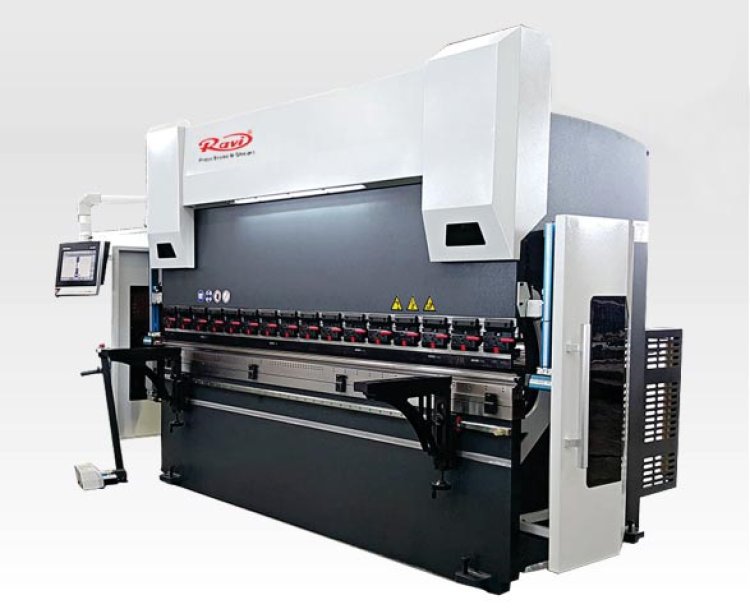How Does the CNC System in a Press Brake Improve Productivity?
The integration of CNC technology in press brakes has transformed metal fabrication by improving precision, efficiency, and productivity. A CNC Press Brake streamlines operations, reduces material waste, and enhances workplace safety. With advancements by leading Bending Machine Manufacturers, CNC-controlled systems continue to play a crucial role in modern manufacturing, ensuring high-quality and cost-effective metal bending solutions.
Share this Post to earn Money ( Upto ₹100 per 1000 Views )
In modern metal fabrication, the integration of CNC Press Brake technology has revolutionized bending processes. Unlike traditional methods, CNC-controlled press brakes offer unmatched precision, efficiency, and consistency. Leading Bending Machine Manufacturers continually enhance CNC technology to maximize production speed, accuracy, and reliability. The automation provided by CNC systems significantly reduces setup time and improves overall workflow.

Precision and Accuracy
A CNC Press Brake ensures high-precision bending by allowing operators to program exact bending angles and sequences. This eliminates human error and enhances repeatability, producing uniform parts. Unlike a Mechanical Press Brake, which requires manual adjustments, a CNC-controlled system automatically positions the back gauge and ram, ensuring precise bends every time.
Automated Operations and Faster Setup Times
One of the key advantages of a CNC Press Brake is its ability to store multiple bending programs. Operators can recall saved configurations for repeat jobs, significantly reducing setup time. Additionally, modern Bending Machine Manufacturers incorporate advanced features like automatic tool changers and real-time monitoring, enabling seamless operations with minimal downtime.
Higher Production Speeds
Compared to conventional bending machines, a CNC Press Brake operates at much higher speeds. It optimizes ram movement and back gauge positioning, ensuring faster cycle times without compromising accuracy. The automation allows manufacturers to handle large-scale production with ease, increasing efficiency and profitability.
Reduction in Material Waste
A CNC Press Brake minimizes material waste by ensuring accurate bending in the first attempt. The CNC system simulates bending sequences before execution, reducing trial-and-error adjustments. This is a significant improvement over a Mechanical Press Brake, where miscalculations can lead to costly material wastage.
Also Read:- What makes hydraulic CNC Press Brakes essential for metal forming?
User-Friendly Interface and Training Advantages
Modern Bending Machine Manufacturers equip CNC systems with intuitive touchscreen interfaces, making them user-friendly even for less-experienced operators. The ability to visualize bending sequences through 3D simulation enhances training efficiency, allowing operators to learn quickly and reduce errors.
Improved Safety and Consistency
Safety is a critical factor in manufacturing, and a CNC Press Brake is designed with enhanced safety features. Light curtains, laser safety systems, and automatic overload protection ensure operator safety while maintaining consistent performance. Unlike traditional Mechanical Press Brakes, CNC-controlled systems reduce manual handling, minimizing workplace accidents.
Cost-Effectiveness and Long-Term Benefits
Although the initial investment in a CNC Press Brake is higher than a conventional Mechanical Press Brake, the long-term benefits outweigh the costs. Faster production cycles, reduced material waste, lower labor costs, and increased precision result in substantial cost savings over time. Bending Machine Manufacturers continue to innovate, introducing energy-efficient designs that further enhance cost-effectiveness.
Conclusion
The integration of CNC technology in press brakes has transformed metal fabrication by improving precision, efficiency, and productivity. A CNC Press Brake streamlines operations, reduces material waste, and enhances workplace safety. With advancements by leading Bending Machine Manufacturers, CNC-controlled systems continue to play a crucial role in modern manufacturing, ensuring high-quality and cost-effective metal bending solutions.
FAQs
1. How does a CNC Press Brake differ from a Mechanical Press Brake? A CNC Press Brake offers automated bending with pre-programmed settings, while a Mechanical Press Brake requires manual adjustments, making CNC more precise and efficient.
2. Why do Bending Machine Manufacturers prefer CNC technology? CNC technology ensures higher accuracy, faster production, and reduced material waste, making it the preferred choice for modern manufacturers.
3. Is a CNC Press Brake cost-effective for small businesses? Yes, despite higher initial costs, the efficiency, reduced waste, and automation make it a cost-effective solution in the long run.















